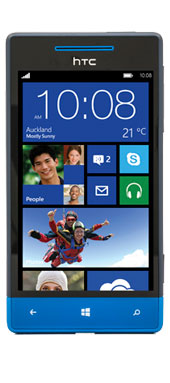Since I wrote about this a couple of weeks back, Noel Leemings and several other retailers put a bundle deal (the camera plus a case plus two batteries and a charger plus a card) out at $179-199. This sort of clinched my decision and I jumped in and picked one up at Leemings.
Apart from being able to run on AA batteries the killer features are the 12x zoom lens and full PASM modes. This camera model has just been superseded and I had thought the pricing was an end of line deal, although they said it’s not. The main challenge is it is significantly more bulky than the SX260 meaning I will need to get a new pouch – the one that comes with it is a snug fit and doesn’t have any space for spare batteries or cards. It is a plastic camera and unfortunately it has a plastic tripod thread underneath. In spite of the finish it feels like a solid well made camera and the battery door is much more solid than the one on the A2300. I found that the A1200 was available from the official supply channel in NZ but has been superseded by the A1300 which has not been released in NZ so that option was ruled out.
As I’ve noted PASM exposure modes (and manual focus) are a killer feature. When Canon introduced the SX100 back in 2007, it brought in a new series of low cost PASM capable cameras, a feature which had been missing at the low price end of the Powershot range for several years. Back in the day, some of the more sophisticated A-series models had these higher end features and still managed to be affordable; for that reason they were commonly sought after by enthusiasts due to their unbeatable value for money. But then that part of the A series was discontinued and you had to pay quite a lot more to get the full exposure controls. When I bought my first Powershot compact, a A400, that was just after the PASM modes had been retired from that series. A more sophisticated (and much more expensive) model with them in would have been the likes of the S100 (now S110) and the middle priced option just would not have been available.
What has swung it for me, despite the inconvenience of having to buy that new pouch, is the high cost of the lithium batteries and Canon’s limited charging options for them. I was going to buy a second battery at $85 for the SX260 but putting that money plus the cost of the 2nd battery for the A2300 towards the SX150 has pretty well paid most of its price. Although this package comes with two NiMH AAs and a little charger I won’t need them as I have a pile of batteries already. I also have an A2300 to give away to a good home (the school will get it). Giving that away does make the SX150 purchase justifiable.
I may have also mentioned plans to buy a DSLR at some stage. I’m rethinking that because it hasn’t been a high priority and keeps getting put off. Along with having three PASM cameras seems to be a bit of an overkill. As I will be giving away the S5 shortly however I will make a move towards buying a DSLR but it will probably now be the cheapest EOS1100 model. Although it lacks some of the more desirable features of the EOS600 or 650 which I have been hankering after, it will do for now and still offers quite a lot of functionality. A twin lens kit is about $875 which isn’t too hard to save up for, and still gives 12 “real” megapixels in that it performs a lot better than any compact of similar resolution with vastly superior low light performance, and of course a full optical viewfinder and a hotshoe for the Speedlite 430 I already own. The LCD screen only has a resolution of 230,000 pixels which isn’t much to write home about but largely irrelevant for previewing photos since the live view isn’t so much use for a camera that heavy. I have played with live view on DSLRs before but on a big camera with a heavy flash on top it makes the use of the camera quite awkward. Likewise the video capabilities aren’t all that special, but in truth it has been many years since I have shot any video clips with any camera at all and dedicated video cameras to record on SD these days are relatively cheap and superior in performance. The screen doesn’t articulate but again this is not a feature I have really missed since I started to use the SX260 instead of the S5 lately. It doesn’t have a sensor cleaning capability but of course you could manually clean it; dust is mapped out by software instead. The lithium battery does have an extremely good life and there isn’t any GPS capability.
